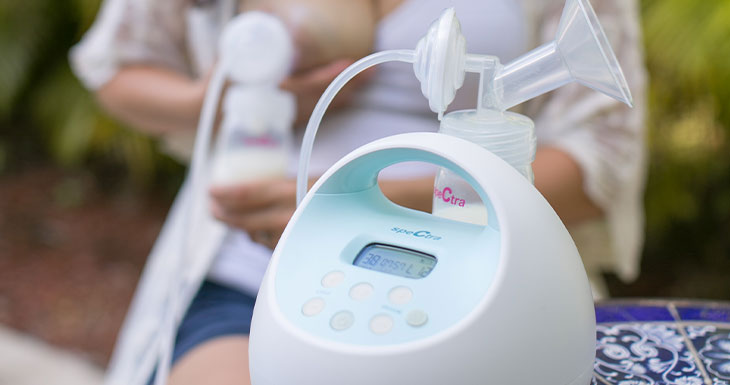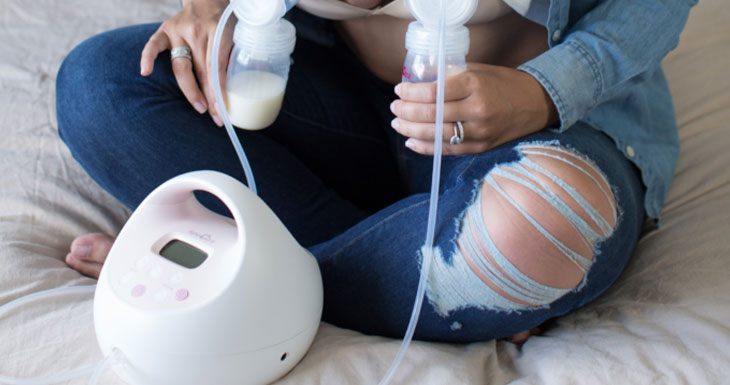Breastfeeding in Public
By Melissa Portunato MPH, IBCLC, RLC
Have you been cooped up inside, soaking up all those yummy newborn snuggles but ready to bust out of the house finally? Going out sounds nice, but you might be thinking about how you will manage it all away from your comfy nest. It’s common for breastfeeding moms to worry about how they will feed their little babe at the breast when in public or how they can find a space to pump. Life doesn’t have to stop! Go on and enjoy your family time anywhere you want!
First things first…
It’s legal in all 50 states to nurse or pump breastmilk for your baby in any public or private location with or without a cover – that’s totally up to you! Click here to read more on breastfeeding laws in your state.
The Two Shirt Trick
The trick is simple: wear two shirts, lift the top and pull down the bottom. When planning your outfit for the day ahead, choose a loose-fitting cami as an undershirt and then wear the other shirt on top. The top shirt doesn’t necessarily have to be a “breastfeeding friendly shirt” since instead; you will lift the top shirt and pull down the cami to expose your breasts for pumping or nursing. Bring out those cute pre-preggo shirts!
Go Hands-Free
The Spectra baby USA CaraCups are discreet and simple to slip inside your regular bra. Yep, you got it! No fancy pumping bra is needed. Instead, you can easily slide them into your bra, center your nipple and start pumping right away. The Spectra CaraCups allow you to easily pump while comforting a clingy toddler, getting active outdoors, or hitting the mall! Have the freedom to go about your day all while expressing your liquid gold! Pump in meetings, with clients, or on breaks. Going hands-free will make all the difference in your breastfeeding journey!
Baby Wearing for the WIN!
Structured carriers with a top hood are great to nurse in, and YES, even pump! Throw the Spectra 9Plus in your pocket, and you’ll pump your liquid gold without missing out on any fun while you’re out and about! I recommend pumping one breast at a time if you are wearing baby. If you’re nursing at the breast, make your pumping sessions even more discreet and interchange your carrier for a breastfeeding cover. And YES, mamas! Pumping is breastfeeding!
Expert tips:
✔ At home, practice in front of a mirror! This will help you get the hang of things before heading out, and you will be more confident!
✔ You can turn away from the crowd to latch your baby or hook up your flanges.
✔ Throw an infinity scarf over your neck to be even more discreet.
Do you have breastfeeding questions? We can help! Our Spectra baby USA IBCLC experts are happy to help answer your questions so that you can get back to what matters most—making milk for your baby.




